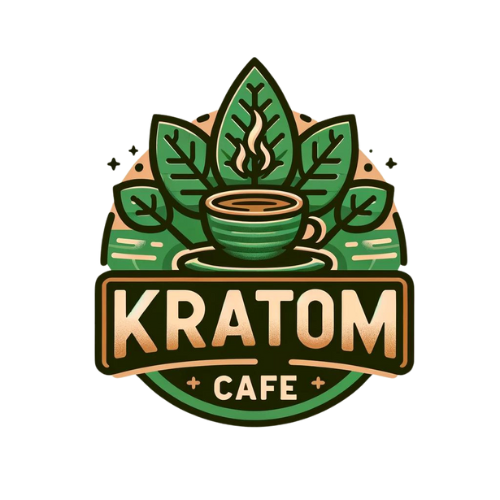Pain management is an essential part of everyday life for many individuals.
We at Kratom Cafe aim to provide insights into various pain solutions, including over-the-counter medications, therapeutic exercises, and alternative therapies.
By exploring the effectiveness, popularity, and benefits of these methods, you can find the best approach to managing pain.
Are Over-the-Counter Medications Effective for Pain Management?
Over-the-counter (OTC) medications are a cornerstone for many dealing with mild to moderate pain. They provide a convenient option without needing a prescription. However, their effectiveness and side effects warrant a closer look.
Common Types of OTC Pain Medications
OTC pain relievers primarily include Nonsteroidal Anti-Inflammatory Drugs (NSAIDs) like ibuprofen and naproxen, as well as acetaminophen. NSAIDs are effective for pain linked to inflammation, such as arthritis or muscle strains. In contrast, acetaminophen is typically recommended for headaches and minor aches and pains.
Effectiveness and Popularity
NSAIDs like ibuprofen are known for their efficacy in reducing inflammation and pain. For instance, a study by the American College of Rheumatology reported that NSAIDs effectively decrease pain and improve function in osteoarthritis patients. Acetaminophen, favored for its gentler effect on the stomach, is the go-to for non-inflammatory pain but doesn’t address swelling. In 2020, the sales of OTC pain medications in the US amounted to $4.4 billion, reflecting their widespread use.
Side Effects and Safety Considerations
NSAIDs are double-edged swords. While effective, they can cause stomach pain, ulcers, and even increase the risk of cardiovascular issues when used excessively. The FDA highlights that prolonged NSAID use can lead to gastrointestinal bleeding. Acetaminophen, on the other hand, is gentler on the stomach but carries a significant risk of liver damage if consumed in high doses or combined with alcohol. The CDC advises that doses should not exceed 4,000 mg per day to prevent liver toxicity.
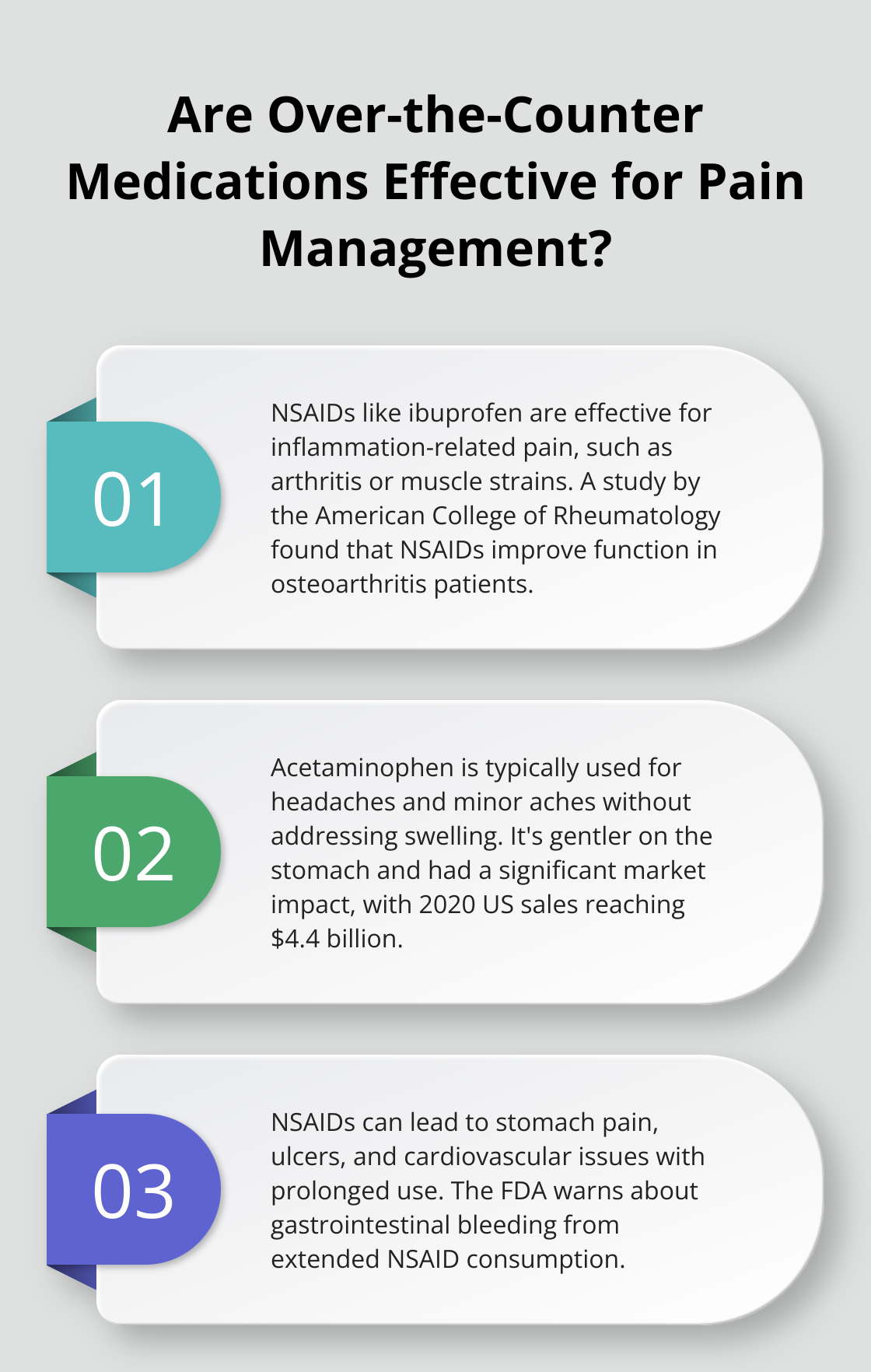
When using OTC pain relievers, it’s essential to follow dosage instructions meticulously and consult healthcare professionals for prolonged pain. Combining medication with non-drug approaches like physical therapy or mindfulness can also enhance pain management outcomes.
For those seeking alternative pain management options, exploring herbal pain management practices can also be beneficial.
Are Therapeutic Exercises Effective?
Therapeutic exercises play a pivotal role in pain management, showing impressive results for many. They target the root cause rather than just alleviating symptoms, making them a crucial component of a holistic approach to pain relief.
Types of Exercises for Pain Relief
Stretching and strengthening exercises are foundational. Stretching improves flexibility and reduces muscle tension, while strengthening exercises support joints and stabilize surrounding muscles. Aerobic exercises, like walking or swimming, enhance cardiovascular health and help manage weight, indirectly reducing pain. Yoga and tai chi combine stretching, strength, and mindfulness, offering an all-encompassing approach to pain relief.
Success Rates and Benefits
Studies consistently underscore the effectiveness of therapeutic exercises. Research from the Annals of Internal Medicine indicates that yoga significantly reduces chronic lower back pain, with 56% of participants reporting reduced symptoms. Additionally, a study in the Journal of Pain Research shows that tai chi is as effective as physical therapy for knee osteoarthritis, with substantial improvements in pain and function.
Practical Tips for Consistent Practice
Consistency is key. Aim for 30 minutes of exercise daily. Begin with low-impact exercises like walking or swimming to avoid exacerbating pain. Gradually increase intensity based on comfort levels. Set realistic goals and track progress. Incorporating exercise into daily routines, like stretching while watching TV, can make a significant difference.
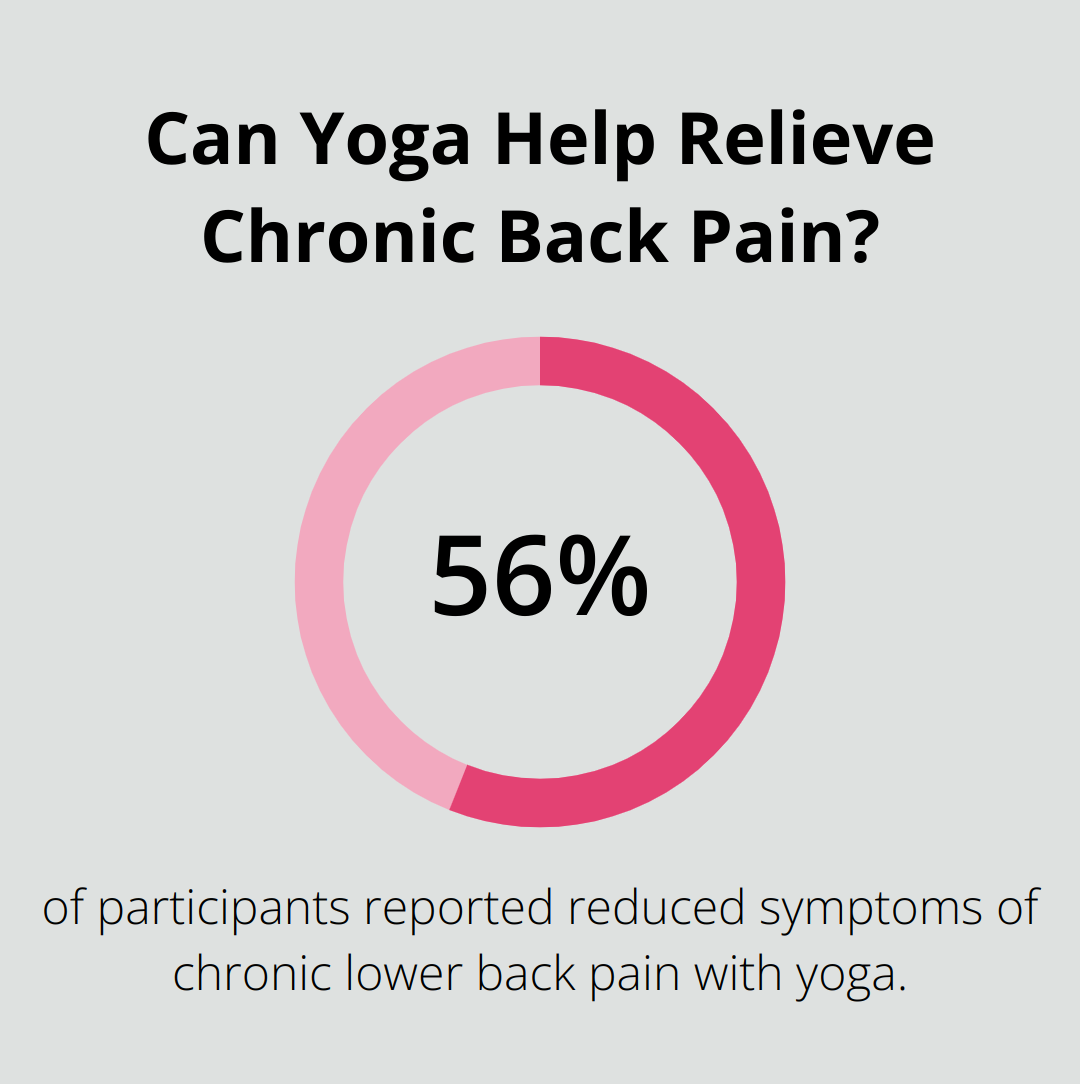
Professional guidance can enhance effectiveness and prevent injuries. Physical therapists provide personalized routines that address specific needs and limitations. Additionally, exploring natural pain relievers may complement exercise, offering a comprehensive pain management strategy.
Conclusively, therapeutic exercises, when integrated into daily routines, provide sustainable pain relief without the side effects associated with medications. For optimal results, combine exercises with other holistic approaches.
Are Alternative Therapies Effective?
When traditional methods alone don’t cut it, alternative therapies offer promising avenues for pain relief. Let’s look at the results and practical benefits of acupuncture, chiropractic care, and herbal remedies.
The Impact of Acupuncture
Acupuncture isn’t just about needles. This ancient Chinese practice has gained significant traction in modern pain management. Studies support its efficacy. The National Institutes of Health (NIH) found that acupuncture can significantly reduce chronic pain, with around 50% of patients reporting notable pain relief. It’s especially effective for conditions like osteoarthritis, migraines, and lower back pain.
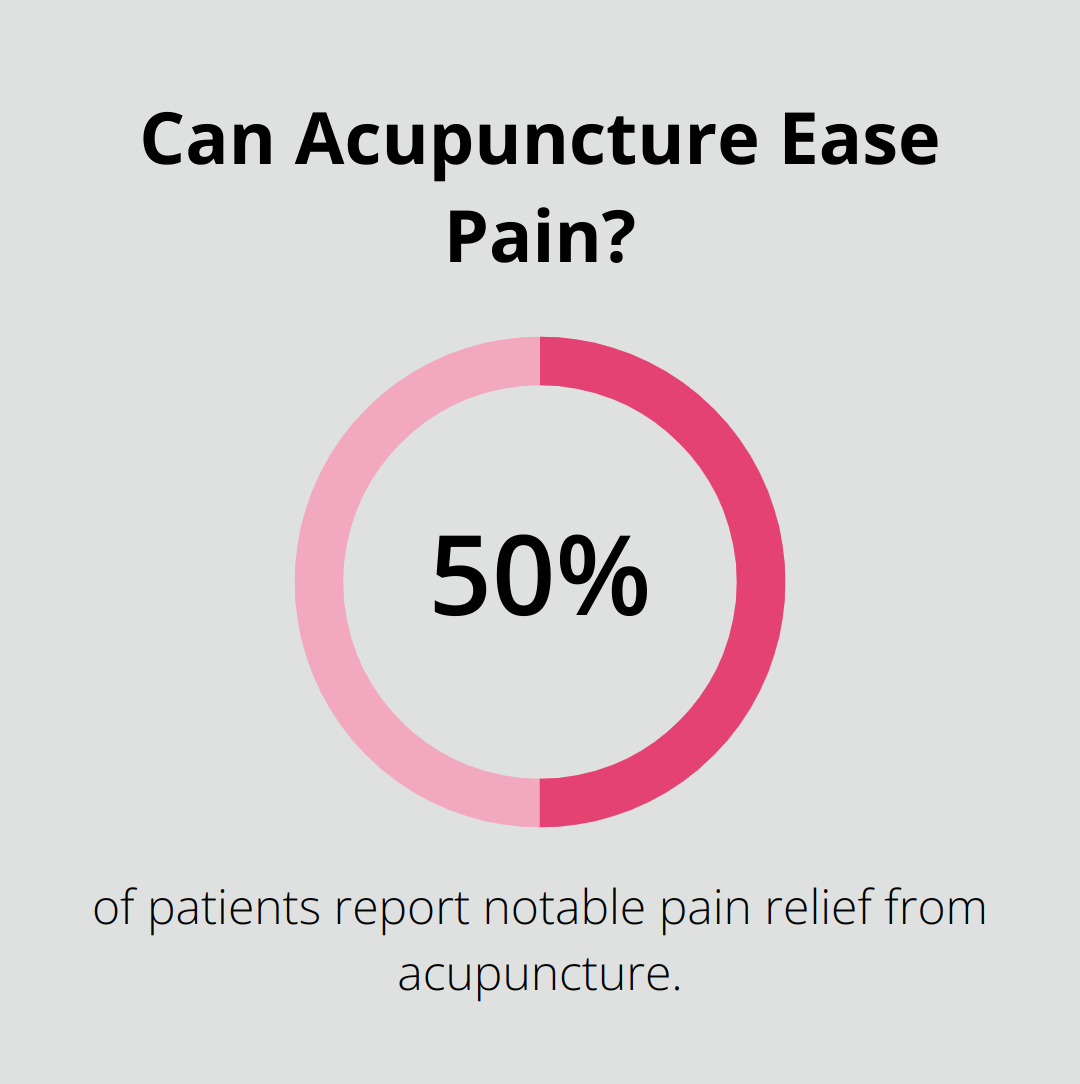
Practical tip: For the best results, ensure you visit a licensed acupuncturist. Consistent sessions, typically once or twice a week initially, can yield better outcomes. For those new to acupuncture, reading about using natural painkillers effectively can offer additional insights on integrating this therapy with other natural methods.
Chiropractic Care Outcomes
Chiropractic care offers a hands-on approach to treating pain, particularly back and neck pain. Research in the Journal of the American Medical Association (JAMA) found chiropractic interventions to reduce pain and improve mobility among patients with acute lower back pain. Importantly, a majority of patients report high satisfaction levels, often attributing their pain relief to chiropractic adjustments rather than conventional pain management techniques.
For those considering chiropractic care, it’s crucial to seek a qualified chiropractor. Combining spinal adjustments with exercises and lifestyle changes can amplify the benefits. Be wary of any provider who pushes for excessive treatments without a clear plan or measurable outcomes.
The Efficacy of Herbal Remedies
Herbal remedies are becoming increasingly popular as complementary options in pain management. Kratom, turmeric, and willow bark have demonstrated their effectiveness in managing pain. According to a review published in Pharmacology Research & Perspectives, kratom provides significant relief for chronic pain sufferers, especially those dealing with arthritis or fibromyalgia. However, it’s important to source herbs from reputable providers to avoid contaminants and ensure potency.
To maximize the benefits of herbal remedies, educating oneself about dosage, potential side effects, and compatibility with existing medications is essential. For a deeper understanding of herbal pain management, peruse this comprehensive guide on herbal pain management.
By integrating acupuncture, chiropractic care, and herbal remedies, individuals can achieve a more holistic and effective approach to pain management, often reducing reliance on traditional medications.
Wrapping Up
Throughout our exploration of effective pain management solutions, we’ve shed light on several methodologies, each with its own merits and efficiency.
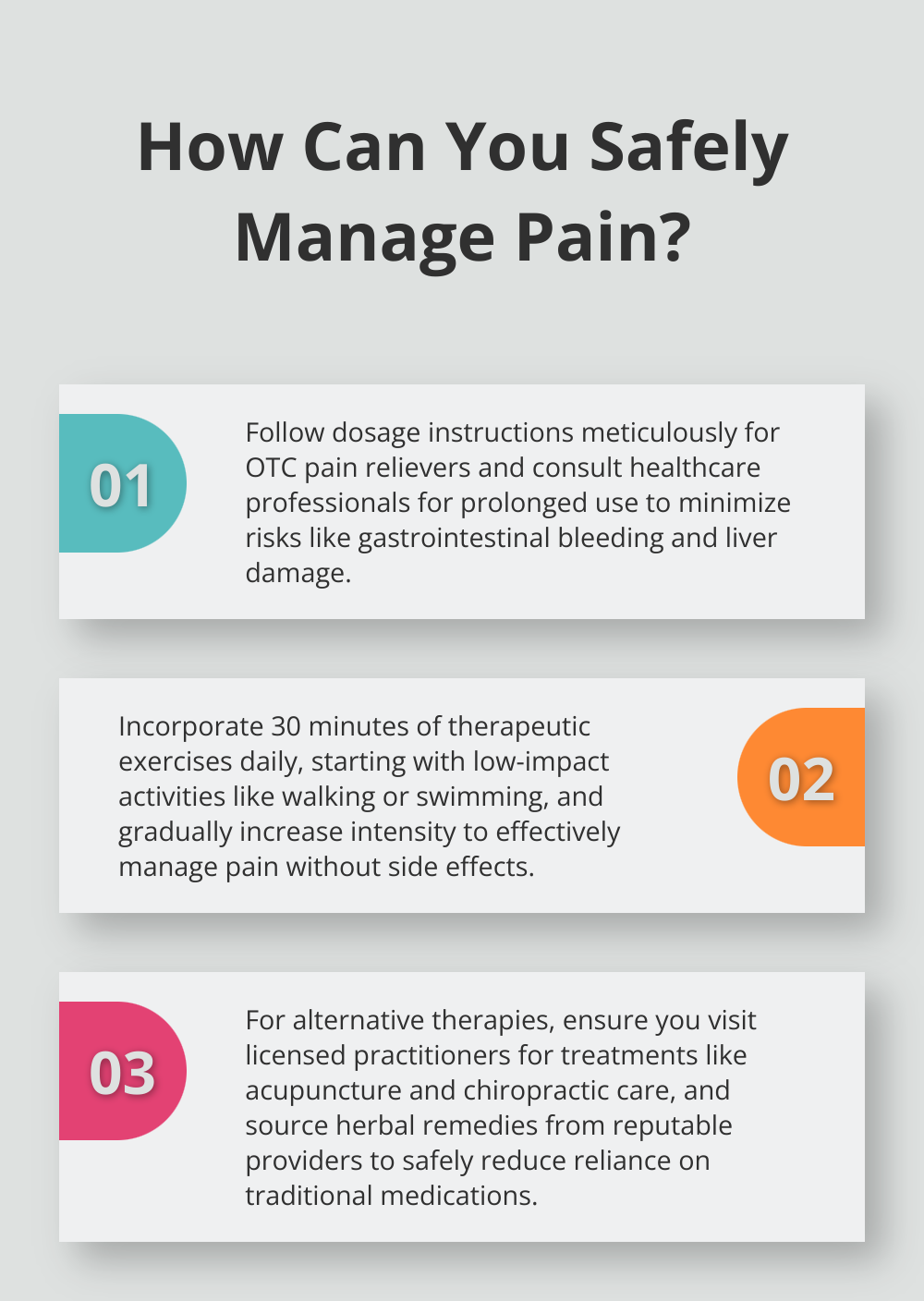
Over-the-counter medications, such as NSAIDs and acetaminophen, have long been a go-to for managing mild to moderate pain. Their widespread use and availability make them accessible; however, they are not without side effects. While NSAIDs are effective against inflammatory pain, users must be cautious of gastrointestinal and cardiovascular risks. Acetaminophen, though gentler on the stomach, poses serious risks to the liver if overused.
Therapeutic exercises, including stretching, strengthening, and low-impact activities like yoga and tai chi, are highly beneficial. They not only alleviate pain but also address underlying issues. Consistency and professional guidance amplify their effectiveness, making them a sustainable long-term solution.
Alternative therapies, such as acupuncture, chiropractic care, and herbal remedies, offer promising results beyond traditional methods. Acupuncture has garnered attention for its success in treating various pain conditions, whereas chiropractic care shows substantial benefits for back and neck pain. Herbal remedies, particularly kratom, are increasingly adopted for their natural pain-relieving properties.
In comparing effectiveness, the choice largely depends on individual needs and conditions. OTC medications provide quick relief but often come with potential side effects. Therapeutic exercises and alternative therapies offer more holistic and long-term benefits without the associated risks of medications.
Looking forward, trends in pain management emphasize the importance of integrating multiple approaches. Combining physical therapy, alternative treatments, and lifestyle changes can create comprehensive pain management plans. Advances in acupuncture techniques, chiropractic methods, and herbal research continue to broaden the horizon for effective, natural pain solutions.
We at Kratom Cafe remain dedicated to providing valuable insights into these diverse pain management strategies. For more on the benefits of natural remedies and therapies, visit Kratom Cafe, your ultimate hub for kratom information and guidance.
